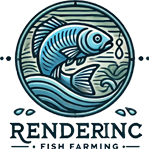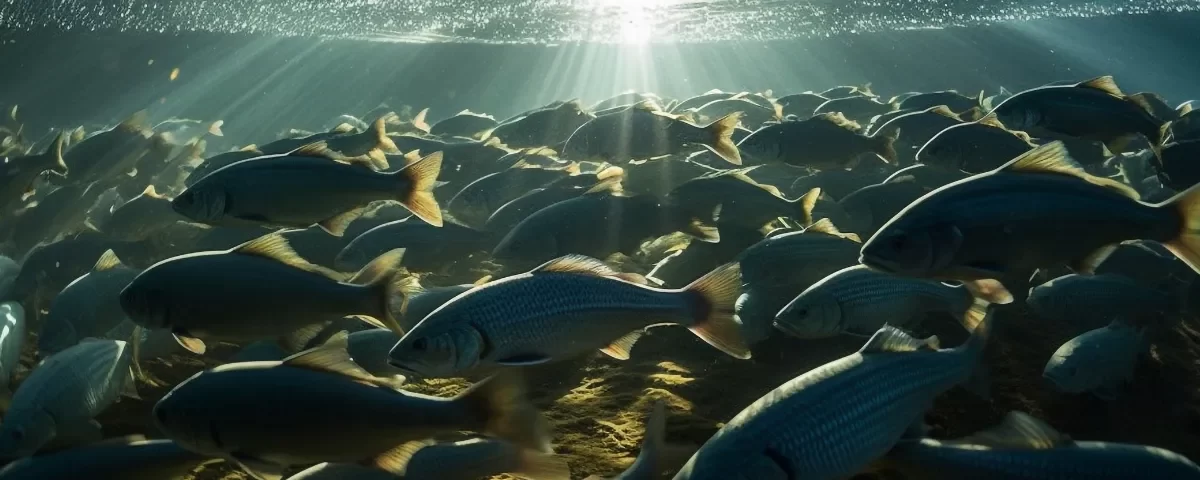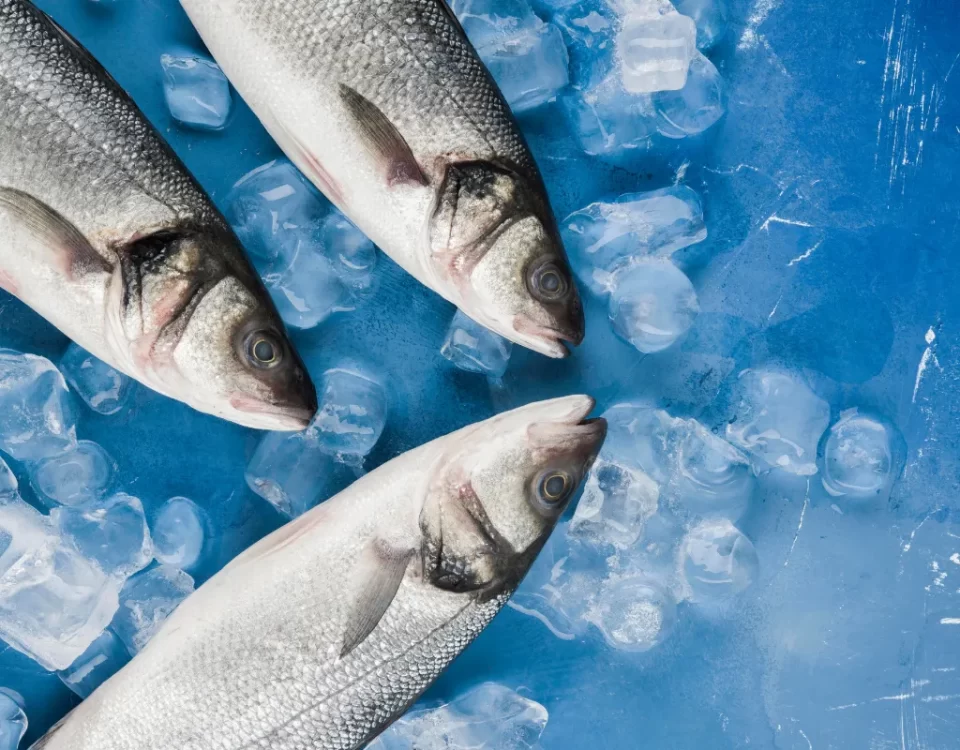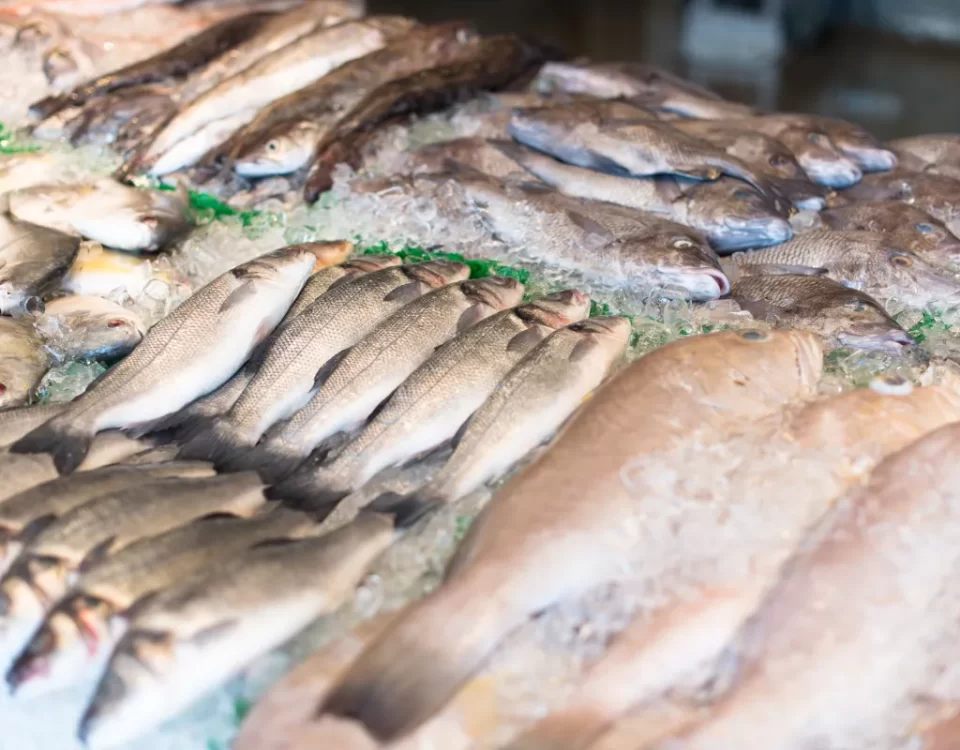How to Select the Right Fish for Your Aquaculture System

Top 5 Game-Changing Technologies in Modern Aquaculture
setembro 17, 2024
How AI is Revolutionizing Fish Farming: The Future of Aquaculture
setembro 18, 2024Aquaculture, the practice of cultivating aquatic organisms such as fish, shellfish, and seaweed, has become an increasingly vital source of sustainable seafood production to meet the rising global demand. As wild fish stocks decline due to overfishing and environmental concerns, aquaculture presents a promising solution to alleviate pressure on natural ecosystems while providing a reliable source of protein.
Selecting the right fish species for your aquaculture system is a critical decision that can greatly impact the success and sustainability of your operation. Different fish species have varying requirements in terms of water quality, temperature, feeding habits, and growth rates, making careful consideration essential to ensure optimum performance and profitability.
Understanding the Importance of Selecting the Right Fish Species
The importance of selecting the appropriate fish species for your aquaculture system cannot be overstated. Mismatched fish species can lead to poor growth, increased mortality, and disease outbreaks, ultimately affecting the overall productivity of your farm. Factors such as environmental conditions, market demand, and management practices should all be taken into account when choosing the right fish species to cultivate.
Environmental Considerations
One of the key considerations when selecting fish species for aquaculture is the environmental conditions of your farming location. Factors such as water temperature, oxygen levels, salinity, and potential presence of pollutants can influence the suitability of certain fish species for your system. It is essential to choose fish species that are well-suited to the local environmental conditions to ensure their health and optimal growth.
Market Demand and Economic Viability
Another important aspect to consider when choosing fish species for aquaculture is market demand and economic viability. Conducting market research to identify popular fish species with high demand and favorable market prices can help you make informed decisions that align with your business goals. Selecting fish species that are in demand can improve profitability and ensure a steady market for your products.
Understanding Your Aquaculture System
Aquaculture, the art of cultivating aquatic animals and plants, offers various types of systems that suit different farming needs. These systems include ponds, recirculating aquaculture systems (RAS), and cages among others. Each system has its own set of requirements and benefits, making it essential to understand which one aligns best with your goals and resources.
Different Types of Aquaculture Systems
- Pond Aquaculture: Utilizing natural or man-made ponds, this system is cost-effective and relatively straightforward. Pond aquaculture benefits from natural microbial ecosystems but may require more space and water quality management.
- Recirculating Aquaculture Systems (RAS): RAS involves circulating water through a filtration system to maintain water quality. This system offers control over environmental factors like temperature, oxygen levels, and waste management, enabling a more controlled environment for fish growth.
- Cage Aquaculture: Common in open water bodies, cage aquaculture involves confining fish in cages submerged in natural water bodies. While this system utilizes existing water resources, it requires careful monitoring to prevent pollution and disease spread.
Factors to Consider When Choosing a Fish Species
Selecting the right fish species for your aquaculture system is crucial for success. Consider the following factors when making your decision:
- Water Temperature: Different fish species thrive in specific temperature ranges. Ensure your aquaculture system can maintain the optimal temperature for your chosen fish species.
- Water Quality: Water quality parameters such as pH levels, oxygen content, and nutrient levels play a significant role in fish health. Choose fish species tolerant to the water conditions your system can provide.
- Feeding Requirements: Fish species have varying feeding habits and requirements. Consider the availability and cost of feed suitable for your chosen species.
- Growth Rate and Market Demand: Evaluate the growth rate of the fish species and the market demand for them. Opt for species that grow well in your system and have a consistent market demand.
Understanding your aquaculture system and choosing the right fish species are foundational steps in establishing a successful fish farming venture. By considering the unique requirements of each system and the specific needs of your chosen fish species, you can optimize your aquaculture operation for efficiency and profitability.
Researching Fish Species
When selecting the right fish for your aquaculture system, thorough research is essential to make an informed decision. Understanding the characteristics of different fish species will help you determine which one aligns best with your goals and resources.
Popular Fish Species for Aquaculture
Tilapia, catfish, and salmon are among the most popular choices for aquaculture due to their commercial viability and adaptable nature to various farming conditions. Tilapia, for instance, is known for its rapid growth rate and hardiness in different water qualities. Catfish, on the other hand, are prized for their high market demand and tolerance to overcrowding in densely stocked systems. Salmon, although more demanding in terms of environmental requirements, offers premium market prices and a reputation for culinary excellence.
Characteristics of Each Fish Species
Tilapia is renowned for its fast growth and ability to thrive in diverse temperature ranges. Catfish, while slower-growing than tilapia, are known for their efficient feed conversion and resilience to fluctuations in water quality. Salmon, a popular choice in high-end markets, requires cold, well-oxygenated water and precise monitoring of environmental conditions for optimal growth.
Pros and Cons of Raising Each Fish Species
When considering tilapia, the pros include high growth rates, low feed conversion ratios, and stable market demand. However, cons such as susceptibility to diseases in intensive farming systems and lower market prices compared to salmon should be taken into account. Catfish offers easy management, consistent market demand, and tolerance to high stocking densities as pros, with potential cons being different water quality preferences and slower growth rates than tilapia. Salmon stands out for its premium pricing, market desirability, and culinary appeal, with the major con being the strict environmental requirements and initial investment costs for setting up suitable aquaculture conditions.
Assessing Market Demand
When venturing into the world of aquaculture, assessing market demand is a crucial step in ensuring the success of your fish farming venture. Understanding the dynamics of the market can help you make informed decisions about which fish species to cultivate. One of the primary aspects of assessing market demand is researching market trends and the demand for different fish species. By staying abreast of current market trends, you can identify which fish are in high demand and are likely to fetch a good price in the market.
Researching Market Trends and Demand for Fish Species
Conduct thorough research to gather information on the popularity of various fish species in the market. Consider factors such as consumer preferences, regional preferences, and the sustainability of different species. Analyze market reports, industry publications, and data on consumption patterns to gain insights into which fish species are in high demand. By understanding these trends, you can align your aquaculture production with market demand.
Identifying Potential Customers and Target Markets for Your Aquaculture Products
In addition to researching market trends, it is essential to identify potential customers and target markets for your aquaculture products. Consider factors such as consumer demographics, the presence of competing products in the market, and market gaps that you can fulfill. Understanding your target audience can help you tailor your fish farming operation to cater to their needs and preferences, enhancing your chances of success in the market.
Understanding Pricing and Profitability of Different Fish Species
While assessing market demand, it is crucial to consider the pricing and profitability of different fish species. Research the current market prices for various fish species and analyze the production costs associated with each species. Factors such as feed costs, growth rates, and market value should be taken into account when evaluating the profitability of cultivating a particular fish species. By understanding the financial aspects of fish farming, you can make informed decisions about which species offer the best return on investment.
Evaluating Environmental Impact
When selecting fish for your aquaculture system, it is crucial to consider the environmental impact of your choices. Sustainable aquaculture practices are essential to minimize negative effects on natural ecosystems. By prioritizing sustainability, fish farmers can contribute to the health of aquatic environments and ensure long-term viability for their operations.
Sustainable Aquaculture Practices
Incorporating sustainable practices into fish farming involves efficient resource management and responsible production methods. Utilizing recirculating aquaculture systems can help reduce water usage and waste output, leading to a more environmentally friendly operation. Additionally, selecting fish species that have a low environmental impact, such as herbivorous fish that require minimal feed input, can further support sustainability.
Endangered or Threatened Fish Species
It is crucial to avoid using endangered or threatened fish species in aquaculture to prevent further harm to their populations. By choosing commercially viable species that are not at risk, fish farmers can contribute to biodiversity conservation efforts and help protect fragile aquatic ecosystems. Before selecting fish for your aquaculture system, research the conservation status of various species to make informed decisions.
Regulations and Guidelines
Regulations and guidelines for fish farming play a vital role in protecting natural ecosystems and promoting responsible aquaculture practices. Authorities often establish environmental standards and best management practices to ensure that fish farms operate in an eco-friendly manner. By adhering to these regulations, fish farmers can help minimize their environmental impact and contribute to the sustainability of the aquaculture industry.
Remember, the choices you make when selecting fish for your aquaculture system can have a significant impact on the environment. By prioritizing sustainability, avoiding endangered species, and following regulations, you can create a fish farming operation that is both profitable and environmentally responsible.
Planning Your Fish Farm
When embarking on an aquaculture venture, it is crucial to start with a solid plan to ensure the success of your fish farm. One key aspect of planning involves designing the layout of your aquaculture system in accordance with the specific requirements of the fish species you have chosen to cultivate. Different species have varying needs in terms of habitat, water quality, and space, so tailoring your system to accommodate these factors is vital. Consider factors such as temperature requirements, water flow rates, and preferred substrates for nesting or shelter.
Designing the Layout of Your Aquaculture System
When designing your aquaculture system, take into account the size and behavior of the fish species you intend to raise. For example, if you plan to cultivate tilapia, which are known for their high stocking densities, you may opt for a recirculating aquaculture system that maximizes water usage and space efficiency. Conversely, if you choose to raise trout, which require colder water temperatures and higher oxygen levels, a flow-through system with ample aeration may be more suitable.
Calculating Stocking Densities and Feed Requirements
Determining the appropriate stocking densities and feed requirements for your fish farm is essential for promoting optimal growth and health of your fish. Overcrowding can lead to increased competition for resources and higher stress levels among the fish, resulting in stunted growth and susceptibility to diseases. Consider factors such as the size of the fish at harvest, feeding rates, and nutrient content of the feed to calculate the ideal stocking densities and feeding schedules.
Considering Water Circulation, Aeration, and Filtration Systems
Maintaining water quality is paramount in aquaculture to ensure the well-being of your fish and the overall success of your farm. Adequate water circulation helps distribute oxygen and nutrients evenly throughout the system, while proper aeration prevents oxygen depletion and promotes fish respiration. Implementing efficient filtration systems, such as mechanical and biological filters, helps remove waste products and excess nutrients from the water, preventing pollution and supporting a healthy aquatic environment.
By meticulously planning and designing your fish farm to accommodate the specific needs of your chosen fish species, calculating stocking densities and feed requirements accurately, and ensuring proper water circulation, aeration, and filtration systems are in place, you pave the way for a successful aquaculture venture. Prioritizing the well-being and growth of your fish through strategic planning and implementation sets the foundation for a sustainable and thriving fish farming operation.
Managing Fish Health and Welfare
Ensuring the health and welfare of the fish in your aquaculture system is crucial for the success of your operation. By implementing biosecurity measures, you can significantly reduce the risk of diseases spreading among your fish population. Biosecurity measures may include controlling access to your facility, disinfecting equipment and tanks regularly, and monitoring the health status of incoming fish to prevent introducing diseases. By maintaining a strict biosecurity protocol, you can create a healthier environment for your fish to thrive in.
Implementing Biosecurity Measures
Biosecurity measures are essential to prevent disease outbreaks in aquaculture systems. By establishing protocols that limit the introduction and spread of pathogens, you can protect the health of your fish population. This may involve quarantining new fish arrivals, restricting access to your facility, and practicing proper hygiene when handling equipment and fish. Regularly inspecting your fish for signs of illness and promptly addressing any issues that arise is key to maintaining a healthy environment in your aquaculture system.
Monitoring Fish Behavior and Health
Regularly monitoring your fish for any changes in behavior, growth, or overall health is vital in detecting early signs of disease or stress. Keep detailed records of feeding habits, growth rates, and any abnormalities observed in your fish. By staying vigilant and attuned to your fish’s well-being, you can intervene quickly if any health issues arise. Consulting with a veterinarian or fish health specialist can provide valuable insights and guidance in ensuring the optimal health of your fish.
Implementing Proper Vaccination and Medication Protocols
In some cases, vaccination and medication may be necessary to prevent or treat diseases in your fish population. Work closely with a qualified veterinarian to develop a vaccination and medication plan tailored to the specific needs of your fish species and aquaculture system. Follow dosage instructions carefully and keep accurate records of all treatments administered. By integrating proper vaccination and medication protocols into your overall fish health management plan, you can proactively protect your fish from potential health threats.
Harvesting and Marketing Your Fish
When it comes to harvesting your fish from the aquaculture system, timing is crucial. Determining the right time to harvest fish is a balancing act between reaching the optimal size for the species you are farming and meeting market demands. Monitoring your fish regularly for growth progression is essential. Typically, fish are harvested when they reach a desirable size for consumption or when there is a peak in market demand.
Determining the Right Time to Harvest
Consider factors such as the size of the fish – they should meet the preferred market size to fetch the best price. Overgrown fish may lead to a decline in quality. Another important aspect is market demand – staying informed about consumer preferences and market trends can guide your harvesting schedule. It’s advisable to work closely with distributors or buyers to synchronize harvesting with market needs.
Once the fish are harvested, it’s vital to focus on processing, packaging, and storing the fish products correctly to maintain their freshness and quality. Processing involves cleaning, gutting, and, if necessary, filleting the fish. Packaging should be done in such a way that preserves the fish and extends its shelf life. Proper storing conditions, including temperature control and hygiene, are crucial to prevent spoilage and bacterial growth.
Processing, Packaging, and Storing Fish Products
In the aquaculture industry, quality is key. Investing in modern processing equipment and techniques can enhance the quality of your fish products. Vacuum sealing or freezing fish products can help maintain their freshness. Proper labeling with essential information such as product type, weight, and expiry date is essential for consumer confidence. Storing fish products in cold storage facilities at the right temperature ensures they remain fresh until they reach the market.
To market your aquaculture products effectively, marketing strategies play a vital role. Building a strong brand identity, creating eye-catching packaging, and establishing a distribution network are essential components of a successful marketing plan. Engaging in social media marketing, participating in trade shows, and collaborating with local retailers can help increase your product visibility and reach a larger customer base.
Marketing Strategies for Aquaculture Products
Understanding your target market is crucial for effective marketing. Conduct market research to identify consumer preferences, pricing trends, and competitors in the aquaculture industry. Developing a compelling brand story that highlights your sustainable farming practices or product uniqueness can set you apart from competitors. Leveraging digital marketing tools such as social media platforms and e-commerce websites can expand your reach and attract customers looking for quality fish products.
In conclusion, selecting the right fish for your aquaculture system is a crucial step that can significantly impact the success of your fish farming venture. By considering factors such as water quality, species compatibility, market demand, and production goals, you can make informed decisions that will optimize the growth and health of your fish population.
Thorough research and planning are essential pillars of successful fish farming. Investing time and effort into understanding the specific requirements of different fish species, as well as the intricacies of aquaculture systems, will help you develop a solid foundation for your operation. Remember that well-informed choices based on empirical data and best practices are key to mitigating risks and maximizing profitability in the long run.
As you embark on your aquaculture journey, I encourage you to embrace the vast opportunities that the aquaculture industry presents. From cultivating high-value species for niche markets to exploring innovative aquaponics systems that integrate fish farming with plant cultivation, there is a wealth of options to explore. By staying curious, adaptable, and open to new advancements in the field, you can position yourself for growth and success in this dynamic industry.
In the ever-evolving landscape of aquaculture, staying informed, connected, and proactive will be your greatest assets. Continued education, networking, and a willingness to adapt to changing market demands will empower you to navigate challenges and make the most of the diverse opportunities that await in the world of fish farming. Remember, the path to a thriving aquaculture venture begins with thoughtful consideration and a commitment to excellence.

Michael Rivers is an experienced aquaculture enthusiast with over a decade of hands-on knowledge in fish farming and sustainable aquatic systems. Passionate about promoting eco-friendly practices, he shares his expertise on fish breeding, water management, and the latest advancements in aquaculture technology. Through his blog, Michael aims to help both beginners and seasoned fish farmers achieve success in their ventures while contributing to the growth of sustainable food production.




